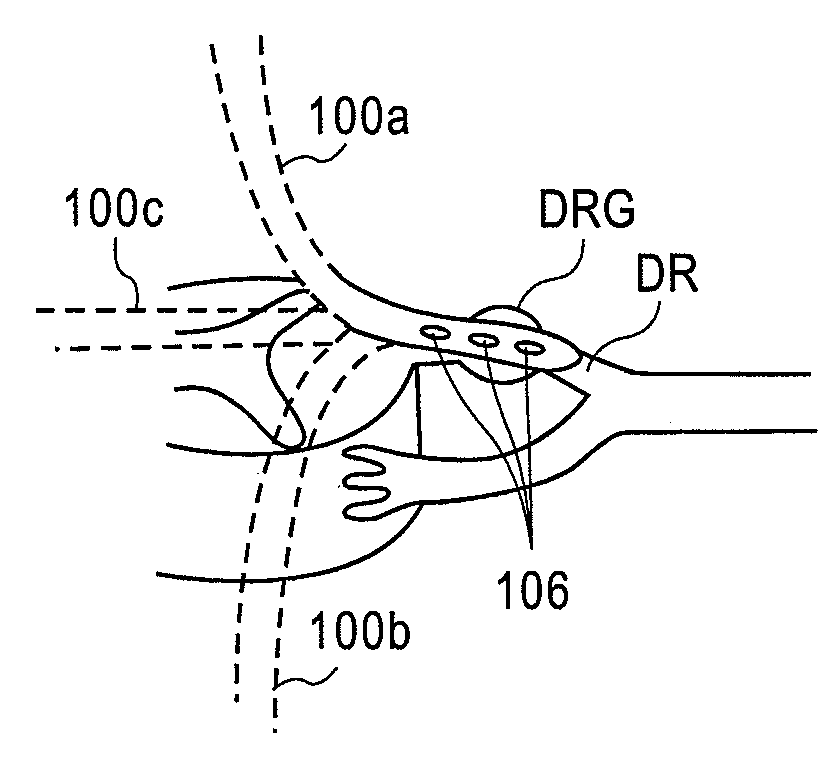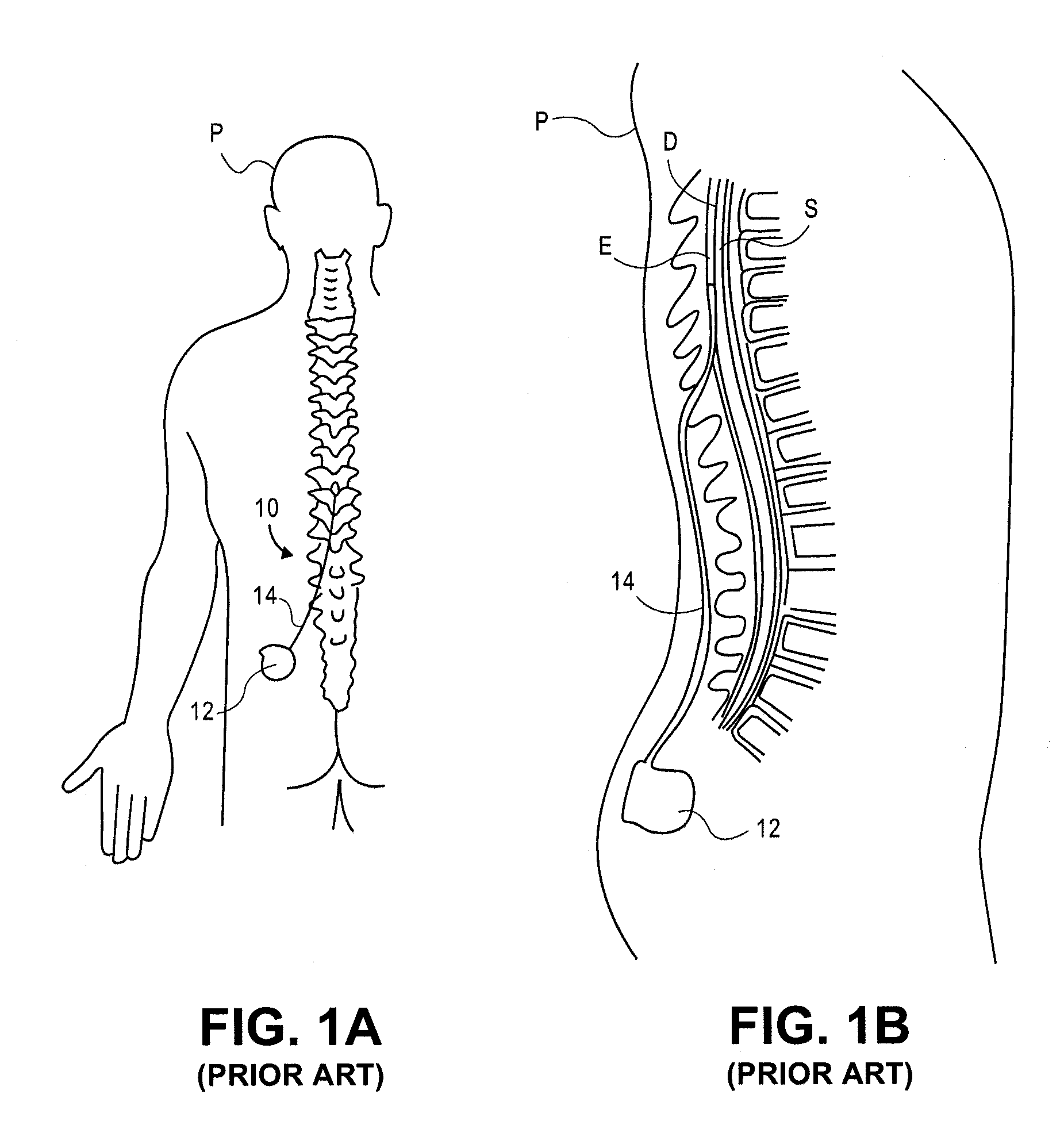Implantable flexible circuit leads and methods of use
a flexible circuit and flexible technology, applied in the field of flexible circuit leads and methods of use, can solve the problems of difficult precise control of the amount of stimulation energy needed to provide the desired amount of neurostimulation, unsatisfactory stimulation of the motor nerve, and further altering the local neural excitability state, etc., to achieve the effect of convenient manufactur
- Summary
- Abstract
- Description
- Claims
- Application Information
AI Technical Summary
Benefits of technology
Problems solved by technology
Method used
Image
Examples
Embodiment Construction
[0066]FIG. 6 illustrates an embodiment of a lead 100 of the present invention. The lead 100 is comprised of a flexible circuit. In particular, the lead 100 is comprised of an elongate structure 107 having a distal end 102 and a proximal end 104. The distal end 102 is configured to be positioned near a target body tissue and the proximal end 104 is coupleable with a power source or implantable pulse generator (IPG). FIG. 6A provides a detailed illustration of the distal end 102 of the lead 100 of FIG. 6. As shown, the lead 100 includes at least one electrode 106 plated on the dielectric film. In this embodiment, four electrodes 106 are present in an array. It may be appreciated that any number of electrodes 106 may be used in any desired arrangement, including longitudinally aligned individually (as shown) or in pairs or sets. FIG. 6B provides a detailed illustration of the proximal end 104 of the lead 100 of FIG. 6. The proximal end 104 includes contact pads 108 that are used to con...
PUM
 Login to View More
Login to View More Abstract
Description
Claims
Application Information
 Login to View More
Login to View More - R&D
- Intellectual Property
- Life Sciences
- Materials
- Tech Scout
- Unparalleled Data Quality
- Higher Quality Content
- 60% Fewer Hallucinations
Browse by: Latest US Patents, China's latest patents, Technical Efficacy Thesaurus, Application Domain, Technology Topic, Popular Technical Reports.
© 2025 PatSnap. All rights reserved.Legal|Privacy policy|Modern Slavery Act Transparency Statement|Sitemap|About US| Contact US: help@patsnap.com



